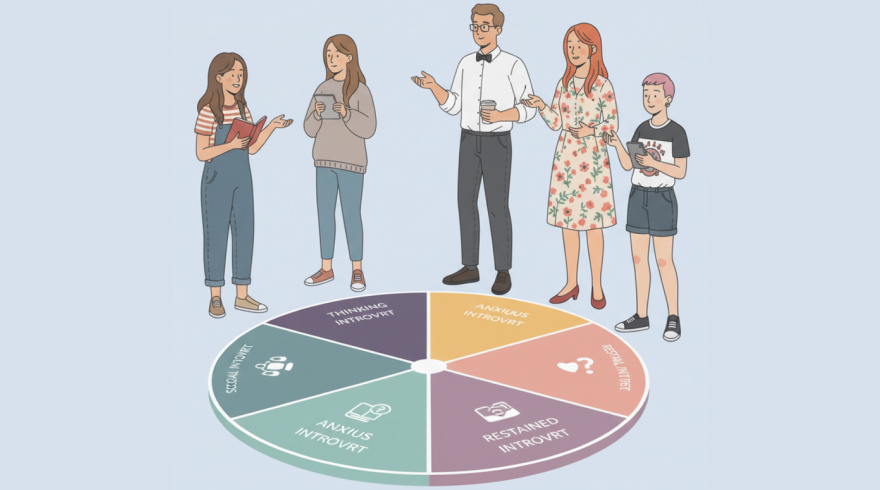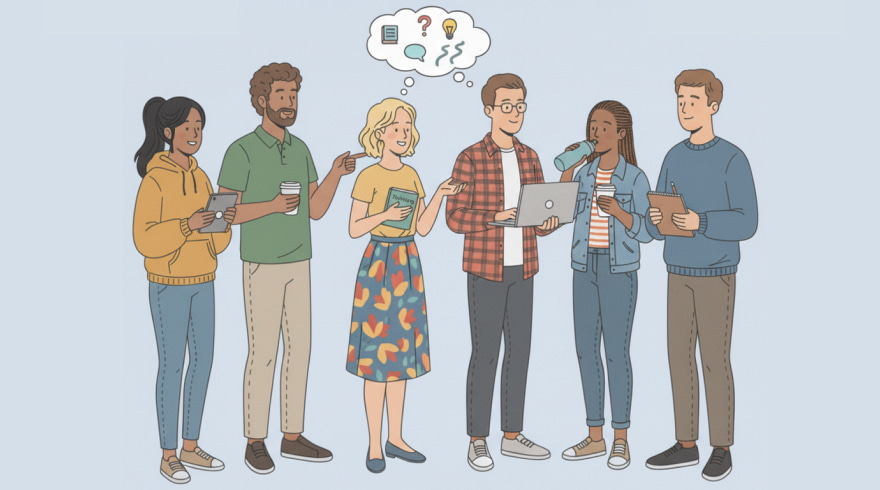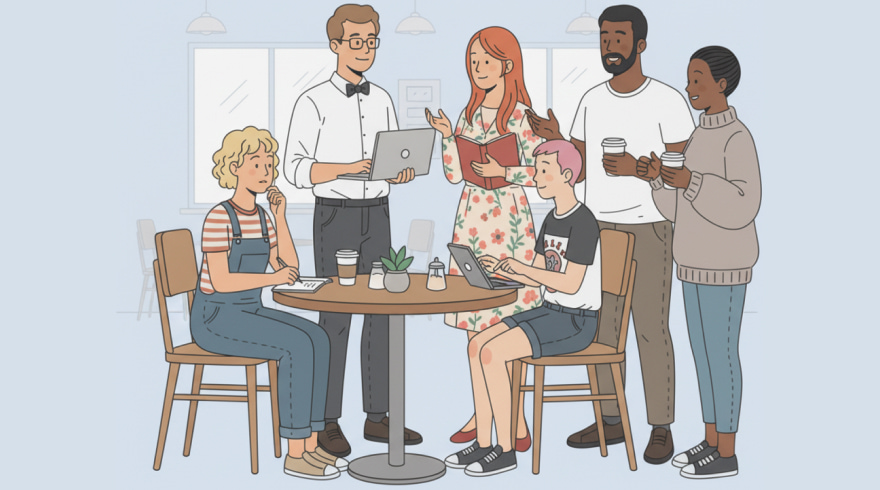The Spectrum of Social Energy: Understanding Personality Traits for Real-World Success
- 3 November 2025

What Personality Traits Mean in Daily Life
Every person manages social energy, attention, and stimulation in a distinctive way, weaving a signature pattern that shows up at work, at home, and in the spaces in between. Rather than hard labels, think in terms of tendencies along a spectrum, with variability driven by context, health, goals, and culture. A meeting-heavy week, a thrilling creative project, or a deadline crunch can shift how anyone shows up. That fluidity explains why the same individual may appear talkative in one setting and reflective in another, without contradiction or inconsistency.
Psychologists often describe social orientation as one dimension within broader models, including curiosity, conscientiousness, emotional steadiness, and openness to novelty. The mix influences how people recharge, how they listen, and how they make decisions. It also explains preferences for quiet focus or dynamic brainstorming, for asynchronous notes or spontaneous conversations, and for depth-first versus breadth-first learning. When teams understand these patterns, they design workflows that reduce friction and highlight complementary strengths, which in turn stabilizes morale and boosts outcomes over time.
- Signals in meetings: who ideates aloud versus who prefers to synthesize before speaking.
- Signals in learning: who seeks interactive workshops versus who favors independent reading and reflection.
- Signals in recovery: who recharges with solitude versus who gains energy from social gatherings.
- Signals in leadership: who coaches one-on-one versus who rallies the room with vision and momentum.
Core Dimensions: Energy, Focus, and Interaction
Across roles and industries, two practical questions clarify social style: where do you get energy, and how do you prefer to process information. Energy sources range from quiet environments to lively collaboration, while processing styles range from internal reflection to external dialogue. Because both can shift with stakes and time horizons, the most useful approach treats orientation as a set of dials rather than fixed switches.
These dials illuminate common patterns many people recognize in themselves and colleagues. Midway on that spectrum, researchers discuss clusters like introvert and extrovert personality traits, which help describe how attention is allocated, how stimulation is regulated, and how interaction preferences arise during projects and social rituals.
| Context | Quieter Orientation | Outgoing Orientation |
|---|---|---|
| Work Sessions | Deep focus blocks, minimal interruptions, written ideation | Interactive sprints, rapid feedback loops, verbal brainstorming |
| Learning | Reading, note-taking, self-paced modules | Workshops, group debates, peer teaching |
| Decision-Making | Time to process, data synthesis, reflective judgment | Real-time discussion, momentum building, decisive calls |
| Social Recovery | Solitude, nature walks, quiet routines | Gatherings, shared activities, community events |
| Stress Response | Pull inward to analyze, conserve energy, plan contingencies | Reach outward for support, mobilize allies, take swift action |
Use these comparisons as conversation starters, not rigid boxes. Teams benefit when individuals articulate what helps them thrive, whether that means meeting-free mornings, structured agendas for live sessions, or richer pre-reads. Over time, micro-adjustments, like mixing asynchronous brainstorming with short huddles, produce outsized gains in clarity, creativity, and sustainable pace.
Benefits and Strengths of Both Styles
Organizations prosper when they recognize how different orientations solve different kinds of problems. Quiet-focused contributors often identify subtle risks, craft elegant architectures, and sustain attention on complex tasks. Socially forward contributors frequently catalyze momentum, cultivate relationships, and rally stakeholders around shared goals. When both sets of strengths are valued, teams cover blind spots and navigate uncertainty with agility.
From an individual standpoint, self-awareness reduces friction and improves choice-making about schedules, communication modes, and recovery routines. In broader typology discussions, some readers encounter labels such as type e personality traits, yet practical application still comes down to tuning environments and behaviors so that natural strengths are amplified while growth edges are deliberately trained.
- Innovation benefits: divergent idea generation paired with convergent refinement delivers robust solutions.
- Risk management: enthusiastic bets are balanced by careful evaluation, improving portfolio resilience.
- Customer success: energizing outreach is complemented by attentive listening, boosting satisfaction.
- Leadership pipeline: charismatic vision is reinforced by strategic depth, strengthening execution.
- Wellbeing: balanced workloads allow both social connection and restorative solitude, preventing burnout.
Communication, Collaboration, and Conflict
Effective collaboration starts with explicit norms that honor varied processing speeds and interaction preferences. Clarity on when to write, when to talk, and when to decide prevents meetings from becoming the default and shields deep work from fragmentation. Equally important is creating predictable rhythms, such as distributing agendas and pre-reads early, so reflective thinkers can prepare and more talkative teammates can channel energy toward the right goals.
- Before meetings: circulate context, questions, and desired outcomes to level the playing field.
- During meetings: use round-robins, time-boxed discussions, and visible notes to include every voice.
- After meetings: capture decisions, owners, and deadlines; invite asynchronous follow-ups for refinements.
- In chat and email: encourage summaries, clear asks, and respectful response time buffers.
- For conflict: separate facts from stories, paraphrase opposing views, and align on shared interests.
When tensions rise, remember that differences in tempo and expression can masquerade as disagreements in intent. Slower, quieter responses might signal careful thinking rather than resistance, while rapid, enthusiastic reactions may reflect urgency or optimism rather than dismissal. Naming these dynamics out loud reduces misinterpretation, builds trust, and accelerates joint problem-solving without sacrificing psychological safety.
Growth Strategies and Situational Flexibility
Personal growth is not about abandoning one’s natural style; it is about expanding range. People who prefer contemplative work can practice concise verbal summaries, rehearse key points before live conversations, and schedule strategic social time when energy is highest. Those who enjoy high interaction can develop deeper listening, refine note-taking, and build systems that convert brainstorms into durable plans.
- Micro-habit layering: pair a five-minute outline with every spontaneous idea burst to capture signal.
- Energy budgeting: arrange high-stakes conversations adjacent to activities that replenish your reserves.
- Environment design: match task type to setting, quiet zones for analysis, collaborative zones for synthesis.
- Deliberate practice: record mock presentations or draft memos to refine both spoken and written clarity.
- Review cadence: weekly retros that ask “What energized me, and what drained me?” guide next steps.
Over time, these practices produce adaptable professionals who can toggle between solitude and sociability as the situation demands. That flexibility pays off in negotiations, stakeholder management, and creative sprints, where the winning move is often to shift gears, listening deeply when nuance matters, then stepping forward to mobilize action once the path is clear.
FAQ: Common Questions About Social Orientation and Traits
Are people strictly one style, or can they be a mix?
Most individuals exhibit a blend that shifts with setting, stakes, and wellbeing. Contextual factors, like clear goals, supportive teammates, and adequate recovery, can pull someone toward more outward expression or toward measured, reflective engagement. Thinking in ranges rather than binaries is more accurate and more useful.
How can leaders design meetings that serve different preferences?
Leaders can send pre-reads early, specify decisions required, and time-box sections for ideation and decision. Techniques such as silent brainstorming, structured turns, and real-time note capture ensure inclusive participation. Ending with next steps and owners helps translate dialogue into action without marginalizing quieter contributors.
What hiring signals reveal social orientation without bias?
Look for evidence of energy management, communication adaptability, and decision processes. Work samples, written prompts, and collaborative exercises reveal how candidates prepare, synthesize, and interact. Avoid over-indexing on interview charisma alone; evaluate the quality of thinking, follow-through, and impact across varied formats.
Does one style innovate more than the other?
Breakthroughs often arise from the interplay of expansive idea generation and meticulous refinement. Groups that welcome multiple modes, sketching, prototyping, writing, and debating, harness more insights. Diversity of approach matters as much as volume of ideas because execution quality determines whether novelty becomes value.
How can individuals prevent social energy burnout?
Plan restoration like any other priority. Build buffers around demanding interactions, protect focus blocks, and schedule connections when they replenish rather than deplete. Simple rituals, walks, journaling, or peer check-ins stabilize energy and keep motivation high throughout changing workloads and seasons.
Latest News
-
![Extrovert Personality: A Deep Guide to Strengths, Skills, and Real-World Advantages]() Extrovert Personality: A Deep Guide to Strengths, Skills, and Real-World Advantages Take Introvert & Extrovert Personality Type Quiz Get Started The Social Engine Behind Outgoing Temperaments People who thrive in conversation, feel energized by teamwork, and seek lively environments often get tagged as “the talkative ones,” yet the reality...
Extrovert Personality: A Deep Guide to Strengths, Skills, and Real-World Advantages Take Introvert & Extrovert Personality Type Quiz Get Started The Social Engine Behind Outgoing Temperaments People who thrive in conversation, feel energized by teamwork, and seek lively environments often get tagged as “the talkative ones,” yet the reality... - 10 November, 2025
-
![Understanding the Quiet Power: A Deep Guide to Introvert Types and Their Benefits]() Understanding the Quiet Power: A Deep Guide to Introvert Types and Their Benefits Take Introvert & Extrovert Personality Type Quiz Get Started Introversion Today: a Quiet Advantage Modern life often rewards the loudest voice, yet the quieter style of processing, observing, and making meaning offers enduring advantages. Many people recharge by steppi...
Understanding the Quiet Power: A Deep Guide to Introvert Types and Their Benefits Take Introvert & Extrovert Personality Type Quiz Get Started Introversion Today: a Quiet Advantage Modern life often rewards the loudest voice, yet the quieter style of processing, observing, and making meaning offers enduring advantages. Many people recharge by steppi... - 7 November, 2025
-
![The Definitive Guide to Understanding and Using Introversion–Extroversion Assessments]() The Definitive Guide to Understanding and Using Introversion–Extroversion Assessments Take Introvert & Extrovert Personality Type Quiz Get Started What Introversion and Extroversion Really Mean Introversion and extroversion describe where your energy flows, how you recharge, and the social bandwidth that feels natural. Rather than a binary, most people...
The Definitive Guide to Understanding and Using Introversion–Extroversion Assessments Take Introvert & Extrovert Personality Type Quiz Get Started What Introversion and Extroversion Really Mean Introversion and extroversion describe where your energy flows, how you recharge, and the social bandwidth that feels natural. Rather than a binary, most people... - 6 November, 2025



